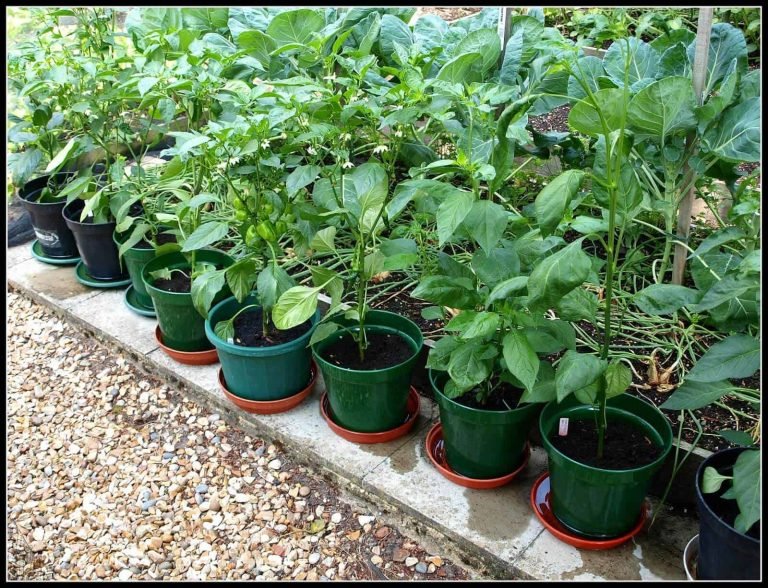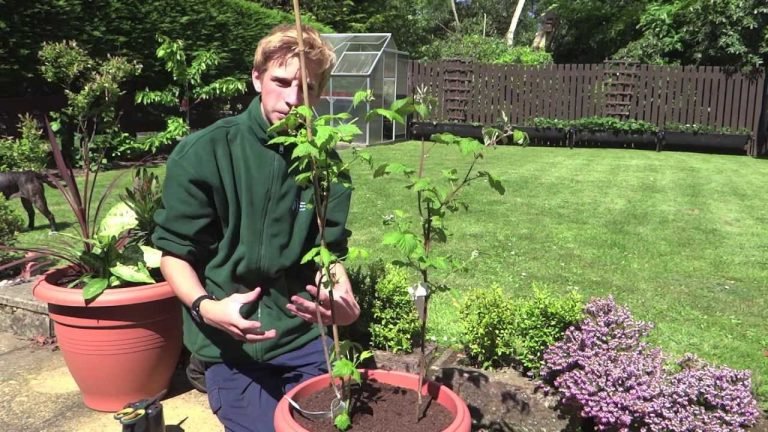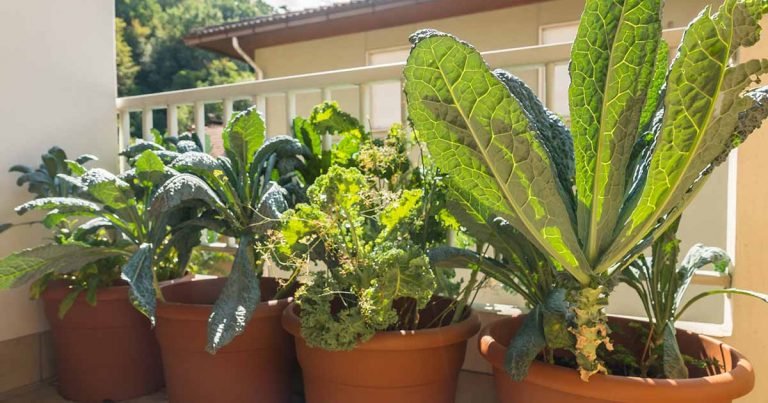how to grow green peppers in a pot – [Beginners Guide]
Hello there! Have you ever thought about growing your own green peppers at home? I have to say, it’s a wonderful experience! Not only do you get to have fresh, juicy green peppers whenever you want, but it’s also a great way to spend time in your garden or on your windowsill. Plus, growing them in pots makes it even easier. In this article, I’ll share my tips and tricks for growing green peppers in pots so that you can get started too!
Why grow green peppers in pots?
There are many reasons why growing green peppers in pots is a great idea. Firstly, it saves space. If you don’t have a lot of room in your garden, growing green peppers in pots is a fantastic alternative. Secondly, it allows for better control over soil quality, water, and light. This means you can optimize growing conditions for your plants and enjoy a bountiful harvest. Finally, it’s convenient. You can move the pots around to find the best location for your plants, and you can bring them indoors during harsh weather.
In conclusion, growing green peppers in pots is an easy, convenient, and fun way to enjoy fresh green peppers right from your own home. So, let’s get started!
Pot or container selection
Choosing the Right Pot for Green Peppers
When it comes to growing green peppers in pots, the right pot can make all the difference. Here are some important factors to consider when selecting a pot:
Size and Capacity:
Green peppers need plenty of room to grow and spread their roots, so it’s important to choose a pot that’s big enough. A minimum pot size of 12 inches in diameter and 12 inches in depth is recommended for one plant. If you want to grow multiple plants, choose a larger pot with sufficient room for each plant to grow.
Pot Construction:
The construction of the pot is also important. Choose a pot that has good drainage holes to prevent water from becoming stagnant and causing root rot. Terracotta pots are great for this as they are porous and allow excess water to escape. Additionally, consider a pot with a saucer or tray to catch any water that drains through the holes, protecting your surfaces.
In conclusion, choosing the right pot for your green pepper plants is important to ensure they have enough room to grow and proper drainage to prevent root rot. A pot with a minimum size of 12 inches in diameter and depth, with good drainage holes and a saucer or tray, is recommended.
Make suitable soil mix
Soil Mix for Growing Green Peppers
Having the right soil mix is crucial for growing healthy green pepper plants. Here’s what you need to know about the type and mixture of soil required:
Type of Soil:
Green peppers prefer well-draining soil with a slightly acidic pH between 6.0 and 6.8. A high-quality commercial potting mix or a mixture of equal parts peat moss, vermiculite, and compost is a great option.
Correct Soil Composition:
It’s essential to have the correct soil composition to provide your green pepper plants with the nutrients they need to thrive. The soil should be rich in organic matter and have adequate levels of nitrogen, phosphorus, and potassium. Consider adding compost or slow-release fertilizer to the potting mix to provide the necessary nutrients.
In conclusion, having the right soil mix is crucial for growing healthy green pepper plants. Use a high-quality commercial potting mix or a mixture of peat moss, vermiculite, and compost, with a slightly acidic pH between 6.0 and 6.8. Ensure the soil is rich in organic matter and has adequate levels of nitrogen, phosphorus, and potassium.
How to plant the green peppers?
Step-by-Step Guide to Planting Green Peppers in Pots
Follow these simple steps to successfully plant green peppers in pots:
- Choose the Right Pot: Select a pot that’s big enough for your green pepper plants to grow, with good drainage holes and a saucer or tray. A minimum size of 12 inches in diameter and depth is recommended.
- Prepare the Soil Mix: Fill the pot with a high-quality commercial potting mix or a mixture of equal parts peat moss, vermiculite, and compost. The soil should be rich in organic matter and have a slightly acidic pH between 6.0 and 6.8.
- Plant the Seeds or Seedlings: If planting seeds, sow them shallowly, about 1/4 inch deep, and cover with soil. Water gently and keep the soil moist. If planting seedlings, gently remove them from their pots and place them in the soil, making sure the roots are covered with soil. Water gently.
- Provide Adequate Light: Green peppers need plenty of light to grow, so place the pot in a sunny location. If you don’t have a sunny location, consider using grow lights to provide the necessary light.
- Water Regularly: Keep the soil moist but not waterlogged. Water your green pepper plants regularly, and make sure to drain any excess water from the saucer or tray to prevent root rot.
- Fertilize: Feed your green pepper plants with a balanced, slow-release fertilizer or compost every 4-6 weeks to provide the necessary nutrients for growth.
In conclusion, planting green peppers in pots is a simple process. Choose the right pot, prepare the soil mix, plant the seeds or seedlings, provide adequate light, water regularly, and fertilize as needed. With a little care and attention, you’ll soon be enjoying fresh, juicy green peppers from your own home!
How to care for green peppers?
Caring for Green Peppers in Pots at Home
Watering Requirements
Green peppers need consistent moisture to grow properly, but they also need well-drained soil to prevent root rot. Here’s what you need to know about watering your green pepper plants:
- Water regularly, keeping the soil moist but not waterlogged.
- Water at the base of the plant, avoiding the leaves and stem to prevent disease.
- Check the soil moisture level regularly and adjust watering as needed, especially during hot and dry weather.
- Make sure to drain any excess water from the saucer or tray to prevent root rot.
Fertilizer Requirements
Green peppers need the proper nutrients to grow and produce fruit. Here’s what you need to know about fertilizing your green pepper plants:
- Use a balanced, slow-release fertilizer or compost every 4-6 weeks.
- Follow the instructions on the fertilizer packaging, as too much fertilizer can burn the roots and harm the plants.
- Avoid fertilizing during extremely hot weather, as the plants may not be able to absorb the nutrients properly.
Sunlight Needs
Green peppers need plenty of light to grow properly. Here’s what you need to know about providing adequate sunlight for your green pepper plants:
- Place the pot in a sunny location that gets at least 6 hours of direct sunlight per day.
- If you don’t have a sunny location, consider using grow lights to provide the necessary light.
- Rotate the pot regularly to ensure all sides of the plant receive equal amounts of light.
Pruning & Training
Pruning and training your green pepper plants can improve their growth and increase their productivity. Here’s what you need to know about pruning and training your green pepper plants:
- Prune the top of the plant to encourage bushier growth and to remove any yellow or diseased leaves.
- Support the plant with a stake or cage to prevent it from falling over as it grows and produces fruit.
- Pinch off any shoots that grow from the base of the plant to encourage taller, bushier growth.
In conclusion, taking good care of your green pepper plants is crucial for their success. Water regularly, fertilize every 4-6 weeks, provide adequate sunlight, prune and train as needed, and keep an eye out for any pests or diseases. With proper care, you’ll soon be enjoying a bountiful harvest of fresh, juicy green peppers!
Common problems
Common Problems faced when growing Green Peppers in Pots at Home
Pests & Insects
Pests and insects can cause damage to your green pepper plants and reduce the quality and quantity of your harvest. Here are some common pests and insects to watch out for:
- Aphids – small, green insects that feed on the sap of the plant, causing stunted growth and yellowing leaves
- Whiteflies – small, white insects that feed on the sap of the plant, causing stunted growth and yellowing leaves
- Spider mites – tiny, red or brown insects that spin webs on the underside of leaves, causing yellowing and wilting
- Cutworms – larvae that feed on the stems of young plants, causing them to collapse
Diseases
Green pepper plants are susceptible to a variety of diseases that can reduce the quality and quantity of your harvest. Here are some common diseases to watch out for:
- Blossom end rot – a calcium deficiency that causes the ends of the fruits to rot and blacken
- Bacterial spot – a disease that causes small, dark spots on the leaves, stems, and fruit
- Early blight – a fungal disease that causes dark, circular spots on the leaves and stems
- Anthracnose – a fungal disease that causes sunken, dark lesions on the fruit and stems
Poor Production
Green pepper plants may not produce as much fruit as expected for a variety of reasons. Here are some common causes of poor production:
- Not enough sunlight – green pepper plants need at least 6 hours of direct sunlight per day to grow and produce properly
- Over-watering – green pepper plants need consistent moisture, but too much water can lead to root rot and poor production
- Under-fertilizing – green pepper plants need the proper nutrients to grow and produce, so be sure to fertilize every 4-6 weeks
- Not enough room to grow – green pepper plants need plenty of space to grow and produce, so be sure to choose a large enough pot or container
In conclusion, growing green peppers in pots at home can be a rewarding experience, but it’s important to be aware of the potential problems that can arise. Keep an eye out for pests and diseases, provide adequate sunlight and water, fertilize regularly, and give your plants plenty of room to grow. With proper care and attention, you’ll be well on your way to a successful and fruitful harvest!
Harvesting & storing homegrown green peppers
Harvesting and Storing Homegrown Green Peppers
When to Harvest
Green peppers are ready for harvesting when they have reached their full size and are a bright green color. They can be harvested at any stage of development, but for the fullest flavor, it’s best to wait until they are fully mature. Here are some signs to look for when harvesting:
- The fruit is firm and has a bright green color
- The fruit has reached its full size
- The skin is glossy and smooth
How to Harvest
When harvesting green peppers, it’s best to use a clean, sharp knife or scissors to cut the fruit from the plant. Be careful not to damage the plant or other fruits when harvesting. Here are the steps to follow when harvesting green peppers:
- Choose a sunny day to harvest the green peppers
- Locate the fruit on the plant and cut it off using a clean, sharp knife or scissors
- Avoid pulling the fruit from the plant, as this can damage the plant and other fruits
- Place the harvested green peppers in a basket or container for transport
Storing
Green peppers can be stored in a variety of ways, depending on how quickly you plan to use them. Here are some common methods for storing green peppers:
- Refrigeration – place the green peppers in a plastic bag or container and store in the refrigerator for up to a week
- Freezing – place the green peppers in a plastic bag or container and store in the freezer for up to 6 months
- Canning – preserve green peppers by canning them in jars for long-term storage
- Dehydration – preserve green peppers by dehydrating them for long-term storage
In conclusion, harvesting and storing green peppers from your home garden is a great way to enjoy their flavor and nutrition all year round. Be sure to harvest the green peppers when they are fully mature and use a clean, sharp knife or scissors to cut the fruit from the plant. Store the green peppers in the refrigerator, freezer, or by canning or dehydrating, depending on your needs and preferences. With these tips and techniques, you’ll be well on your way to a successful and delicious harvest!
Growing green peppers in container – Conclusion
Conclusion:
Growing green peppers in a pot at home is a fun and rewarding experience that can provide you with fresh and delicious vegetables all year round. Whether you are a seasoned gardener or a beginner, with the right information and care, you can successfully grow green peppers in a pot and enjoy their many benefits.
By following the steps outlined in this guide, you can ensure that your green pepper plants receive the optimal care they need to grow and produce high-quality fruits. Whether you choose to use a pot of the right size and construction, the correct soil mix, or provide the right amount of water, sunlight, and fertilizer, you can be confident that your green pepper plants will thrive and produce a bountiful harvest.
So why not give it a try today? With a little bit of patience and attention, you’ll be well on your way to growing your own healthy and delicious green peppers in no time! Here are the key points to remember:
- Choose a pot of the right size and construction
- Use the correct soil mix for optimal growth
- Plant the green peppers correctly and provide the right care and attention
- Harvest and store the green peppers correctly for best results
In conclusion, growing green peppers in a pot at home is a great way to enjoy fresh and delicious vegetables, save money, and have fun in the process. So why wait? Get started today and enjoy the many benefits of growing green peppers in a pot!








